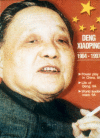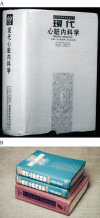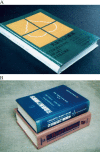The current state of cardiology in China
- PMID: 15301897
- PMCID: PMC7127163
- DOI: 10.1016/j.ijcard.2003.10.011
The current state of cardiology in China
Abstract
Cardiology in China has shown significant changes in the last decade or so. Interventional cardiology, in particular, has shown remarkable advances, especially in the management of coronary artery disease, which, unfortunately, has shown a disconcerting increase in incidence in a country traditionally known for very low incidence of coronary artery disease. Important contributing factors include increasing affluence, westernization of dietary habit and lifestyle, and rampant cigarette smoking. At present, the Chinese population has an annual coronary mortality of one sixth of that reported in the West, an incidence of acute myocardial infarction of one tenth to one eighth, and a mortality of acute myocardial infarction of one eighth. The prevalence of coronary artery disease among the general Chinese population (3-7%) is roughly one quarter of that among the Caucasians in the West, but this will get worse for sure. China still has a lot of catching up to do to reach full modernization. There is a price that every developing country must pay for modernization. However, let the price the Chinese pay not exceed the benefits derived from modernization. Can we achieve a utopian stage in the 21st century in which the modern Chinese retain their ancestral low rates of coronary artery disease while adapting the positive aspects of a modern western lifestyle?
Figures














Comment in
-
In China women uphold half of the sky.Int J Cardiol. 2005 Jun 22;102(1):159. doi: 10.1016/j.ijcard.2004.03.080. Int J Cardiol. 2005. PMID: 15939117 No abstract available.
Similar articles
-
[Cardiovascular risk factors and prevention in women: similarities and differences].Ital Heart J Suppl. 2001 Feb;2(2):125-41. Ital Heart J Suppl. 2001. PMID: 11255880 Review. Italian.
-
Cardiovascular disease risk factors are highly prevalent in the office-working population of Nanjing in China.Int J Cardiol. 2012 Mar 8;155(2):212-6. doi: 10.1016/j.ijcard.2010.09.052. Epub 2010 Oct 18. Int J Cardiol. 2012. PMID: 20961637
-
[Lifestyle modification - is it worth it?].Herz. 2004 Feb;29(1):139-44. doi: 10.1007/s00059-004-2546-8. Herz. 2004. PMID: 14968351 German.
-
Secular trends in cardiovascular disease and its risk factors in Japanese: half-century data from the Hisayama Study (1961-2009).Circulation. 2013 Sep 10;128(11):1198-205. doi: 10.1161/CIRCULATIONAHA.113.002424. Epub 2013 Jul 31. Circulation. 2013. PMID: 23902756
-
API expert consensus document on management of ischemic heart disease.J Assoc Physicians India. 2006 Jun;54:469-80. J Assoc Physicians India. 2006. PMID: 16909697 Review.
Cited by
-
Effect of fast food on blood pressure in China.Can J Public Health. 2005 Sep-Oct;96(5):339. doi: 10.1007/BF03404027. Can J Public Health. 2005. PMID: 16238149 Free PMC article. No abstract available.
-
Unique and Varied Contributions of Traditional CVD Risk Factors: A Systematic Literature Review of CAD Risk Factors in China.Clin Med Insights Cardiol. 2013 Apr 4;7:59-86. doi: 10.4137/CMC.S10225. Print 2013. Clin Med Insights Cardiol. 2013. PMID: 23645989 Free PMC article.
-
Diets play a major role in heart diseases in China.Lipids. 2004 Mar;39(3):291-2. doi: 10.1007/s11745-004-1232-4. Lipids. 2004. PMID: 15233409 No abstract available.
-
Chinese cardiology.Clin Cardiol. 2007 May;30(5):212-3. doi: 10.1002/clc.20142. Clin Cardiol. 2007. PMID: 17492674 Free PMC article. No abstract available.
-
Health Economic Analysis of Antiplatelet Therapy for Acute Coronary Syndromes in the Context of Five Eastern Asian Countries.Clin Drug Investig. 2018 Jul;38(7):621-630. doi: 10.1007/s40261-018-0649-x. Clin Drug Investig. 2018. PMID: 29713921
References
-
- Cheng T.O. Changes in China. N Engl. J. Med. 1972;287:259. - PubMed
-
- Cheng T.O. Acupuncture anesthesia. Science. 1973;179:521. - PubMed
-
- Cheng T.O. A view of modern Chinese medicine. Observations by a Shanghai-born physician during his recent visit after 22 years of absence. Ann. Intern. Med. 1973;78:285–290. - PubMed
-
- Cheng T.O. Medicine in modern China. J. Am. Geriatr. Soc. 1973;21:289–313. - PubMed
-
- Cheng T.O. Cardiovascular diseases. In: Quinn J., editor. China medicine as we saw it. The Fogarty International Center; Bethesda: 1974. pp. 261–288.
MeSH terms
LinkOut - more resources
Full Text Sources

